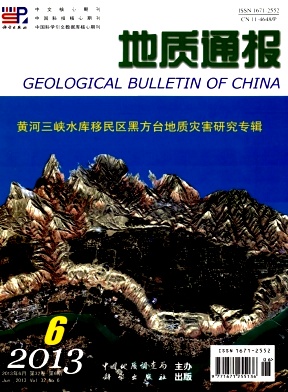ZHU Li-feng1, HU Wei1, JIA Jun1, MA Jian-quan2, BI Jun-bo1, SUN Qiao-yin1. Development features and mechanical mechanism of irrigation-induced landslides in Heifangtai, Gansu Province[J]. Geological Bulletin of China, 2013, 32(06): 840-846.
| Citation: |
ZHU Li-feng1, HU Wei1, JIA Jun1, MA Jian-quan2, BI Jun-bo1, SUN Qiao-yin1. Development features and mechanical mechanism of irrigation-induced landslides in Heifangtai, Gansu Province[J]. Geological Bulletin of China, 2013, 32(06): 840-846.
|
Development features and mechanical mechanism of irrigation-induced landslides in Heifangtai, Gansu Province
-
1. Key Laboratory for Geo-hazards in Loess Area, MLR/Xi'an Center of Geological Survey, CGS, Xi'an 710054, Shaanxi, China;2. Xi'an University of Science and Technology, Xi'an 710054, Shaanxi, China
-
Abstract
Loess shows intensive water sensitivity, and hence water becomes the most positive factor triggering loess landslides, of which irrigation-induced landslides are most typical. Based on field geological survey, this paper summarized the development features of irrigation-induced landslides in Heifangtai. According to an analysis of the development conditions and development features of different types of landslides, the authors hold that the mechanical mechanisms of loess landslides mainly include sliding-compression-induced tension crack-snipping and creep-tension crack-sliding, while the mechanism for loess-bedrock landslides is mainly sliding-compression-induced tension crack-snipping. Loess landslides start with the increase of thickness of saturated loess layer after infiltration of irrigation water. The water content of unsaturated loess differs from that of saturated loess, and therefore shear strength of loess is weakened. Furthermore, the increase of groundwater table due to long-term irrigation leads to the increase of the seepage force at the edge of the plateau where groundwater discharges. So the slopes start to creep and shear under self-weight, and landslides are initiated. Irrigation-induced loess landslides are characterized mainly by high speed and long run-out. Infiltration of irrigation water leads to the softening of the outward dipping structural surfaces in the underlying bedrocks. Hence loess-bedrock landslides are initiated on slopes with outward dipping structural surfaces. Due to large frictional forces on the main sliding surfaces of mudstones, the strain energy accumulated in the process of the formation of sliding surfaces is released in the form of slow continuous creeps of plastic deformation. Thus loess-bedrock landslides are mainly of low speed and short run-out type.
-

-
-
Access History







 DownLoad:
DownLoad: